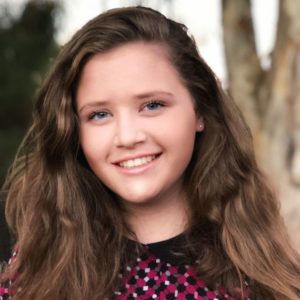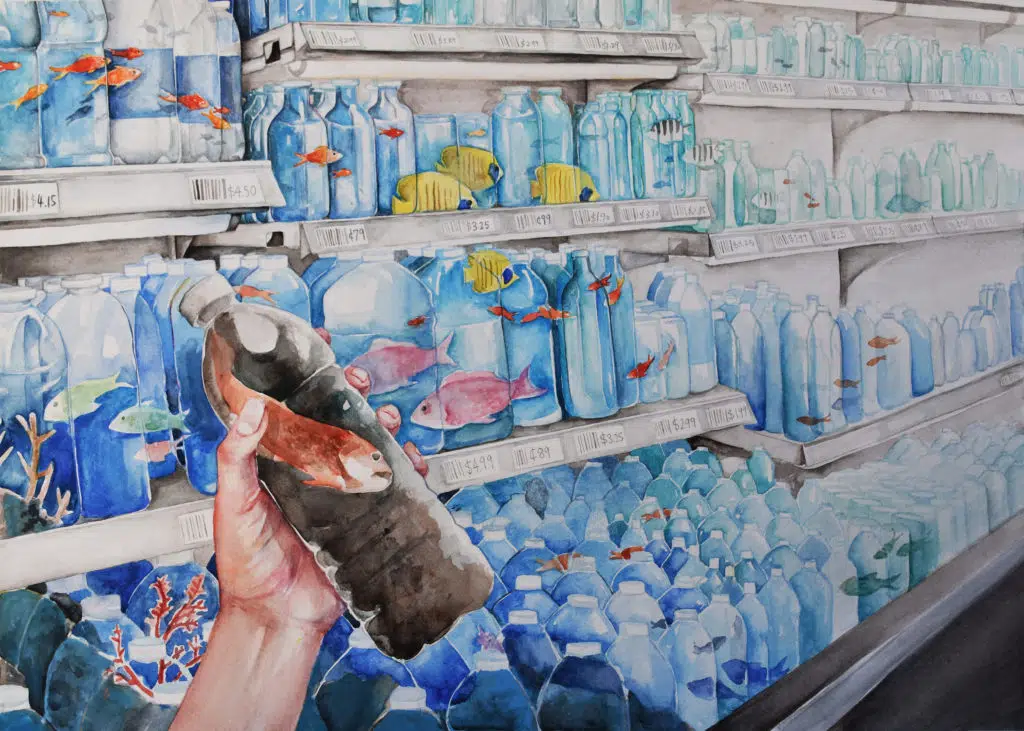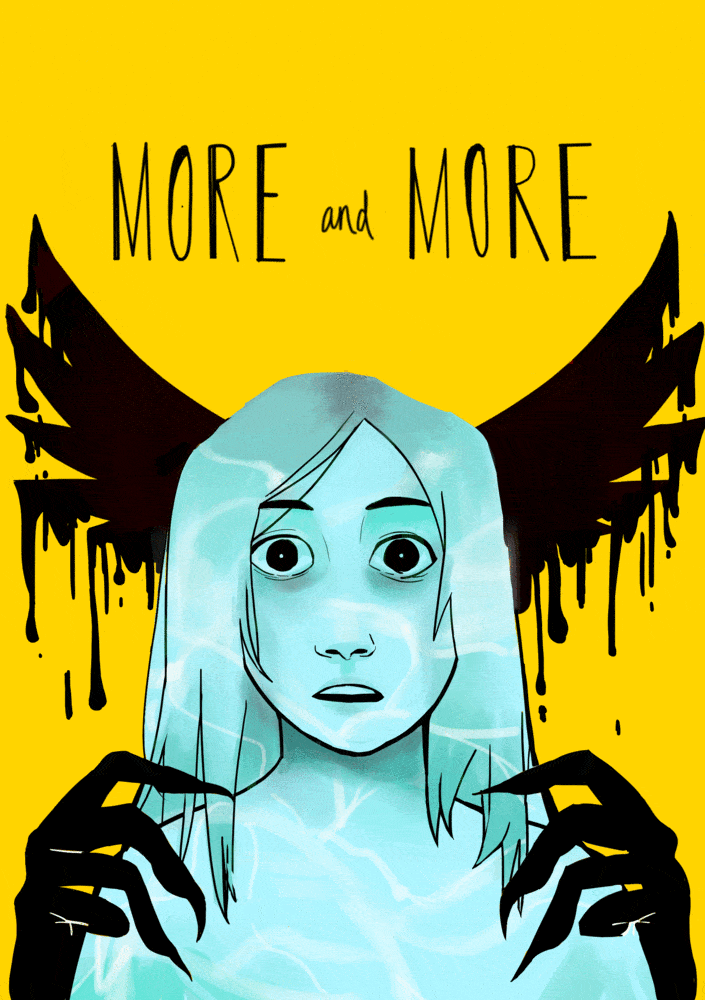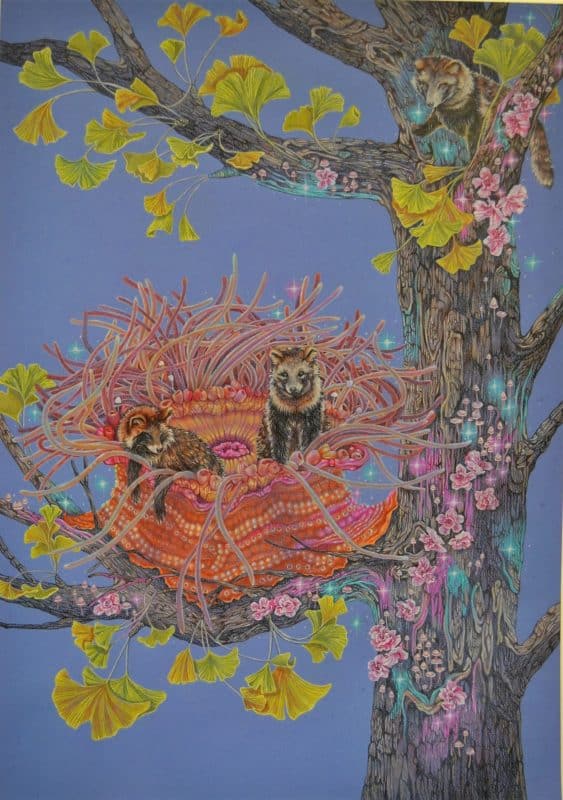
Short Films to Save the Ocean
April 22, 2020In honor of the 50th anniversary of the first Earth Day, we are sharing a collection of student films from the Bow Seat Ocean Awareness Contest archives that explores humanity’s impact on the ocean and our role as both problem-makers and solvers.
DYK: Bow Seat arose in 2011 out of a documentary film, From the Bow Seat, made by Founder and President Linda Cabot, which focused on environmental issues impacting the Gulf of Maine!
Since 2011, the Ocean Awareness Contest has invited teens all over the world to investigate issues of ocean health, such as: plastic pollution, impacts of oil and gas exploration and drilling, and endangered species, as well as climate change and the range of issues that follow in its wake—coral bleaching, ocean acidification, extreme weather events, sea level rise, loss of biodiversity, and impacts on human communities.
Created by youth all over the world, these short films are an opportunity to learn, explore, meditate, and inspire. Watch with your quarantine-mates, or organize friends and classmates for a virtual screening. After each film, we have provided ways for you to learn more and take action on the featured issue. When it comes to saving our ocean, every action counts! If you’re inspired, please share with others to keep building conversation and community around care for our blue planet.
To view our entire collection of student visual art, writing, film, and music, visit our ocean advocacy gallery.
And if our films get your creative juices flowing, be sure to check out our 2020 Ocean Awareness Contest, Climate Hope: Transforming Crisis. Your stories and visions of hope are needed to transform the world.
Jump to:
PLASTIC POLLUTION
Demitri Sedita, (age 14, Florida)
The Gasparilla Bead Problem
Discussion Questions:
- “The Gasparilla Bead Problem” is a great example of a documentary exposé—a film that exposes the hidden truth about a subject. What truth does Demitri expose about the Gasparilla boat parade?
- What role can the media play in encouraging or discouraging this environmental problem?
- The people throwing the beads at this festival likely do not want to intentionally harm the environment. What role can creative media (like Demitri’s film) play in public awareness and education?
- What alternatives to plastic beads could future festival participants use during their celebrations?
Follow Green Gasparilla on Instagram to learn more about Demitri’s work to protect our waters: @greengasparilla
Lauren Krikorian (age 18, California)
Plastics in the Ocean: A Cautionary Tale
Discussion Questions:
- Why are sea turtles particularly vulnerable to plastic pollution?
- In Lauren’s film, we learn that plastics are not biodegradable—what does this mean? Why is this problematic for the ocean, marine life, and human life?
- Who are the superheroes the oldest turtle mentions in Lauren’s film? What did they do to become superheroes?
Wildlife Conservation Corps (age 18, New York)
2 Lost Soles
Discussion Questions:
- What plastic objects do you notice as the sneaker sinks deeper into the ocean? What are some sustainable products that could have been swapped for these plastic objects, which become marine debris?
- What happens to the lost shoes and other plastic debris over time?
- What actions do the Wildlife Conservation Corps highlight that can keep plastic out of the ocean?
Emily Walowski (age 17, Illinois)
Mission: Marine Life
Discussion Questions:
- “Mission: Marine Life” is a parody of the TV and film series “Mission: Impossible.” How does Emily use this format to bring some levity to the serious problem of plastic pollution in our ocean?
- The director labels the case of marine pollution “code red,” meaning it is of the utmost importance. What would happen if countries around the globe treated ocean health as a “code red” situation?
- The agent worries that his new case is “impossible.” Do you think solving the plastic pollution problem is impossible?
- What is the agent’s plan? If put into action, do you think this plan could work?
Dina Katgara (age 17, Florida)
Featured Music Video: Throwaway Society
Discussion Questions:
- What is the significance of the song’s title, “Throwaway Society”? Can you think of more than one way to interpret this title?
- Dina mentions the Great Pacific garbage patch in her lyrics. What is the Great Pacific garbage patch and how did it form? What can we do to prevent this patch and others like it from forming?
- If there is “hope for a better day,” how must we “change our ways”?
Take Action
|
Student Spotlight: Shelby O’Neil

Shelby founded JR Ocean Guardians to share her passion to save our ocean and marine life for future generations. Her global #NoStrawNovember campaign was built on the idea that one small change can make a difference to help build awareness of single-use plastic. Learn more about Shelby’s award-winning campaign for Bow Seat’s Marine Debris Creative Advocacy Competition, and get inspired to make a difference in your own community!
Artist Spotlight: Jessica Yang (age 18, California)

“Message in a Bottle”
“As our world grows increasingly modernized, we’ve begun to prioritize convenience. From plastic takeout boxes to bottles we can just grab off the shelf, many of us choose the efficient or easy route, without much thought to how it affects ecosystems beyond us. With places like the Pacific garbage patch hundreds of miles away, it’s easy to live in blissful ignorance of the impact we’ve had on the environment. Through my art, I wanted to emphasize that while we are the cause of pollution, we are also the ones who can stop it. From what we purchase to what we eat, we have to be conscious of the choices we make. What is viewed as a convenience now can be a catastrophe in the future.”
OIL SPILLS
Many of our young artists choose to focus their work on oil spills, and it’s no wonder why: there have been over 7,000 pipeline incidents reported in the U.S. alone in the past ten years, according to the Pipeline and Hazardous Materials Safety Administration. The BP Deepwater Horizon disaster of 2010, which spilled more than 200 million gallons of crude oil into the Gulf of Mexico, exists as a graphic memory in the minds of these teens. Ten years later, these films resonate as a powerful reminder of the consequences of living in a society that struggles to detach from the grip of the fossil fuel industry.
Ely German (age 16, Texas)
In Our Hands
Discussion Questions:
- “In Our Hands” is a traditional 2-D animation. Ely created her film by hand-painting hundreds of individual panels, then photographing each painting, and running these photos at 10 frames per second, giving the effect of movement. What is Ely able to accomplish with traditional animation that may have been difficult to capture in live action film?
- Ely is able to communicate the entire plot of her film using only pictures—what images do you notice in the film and what do these images symbolize?
- What role do you humans play as problem-makers and problem-solvers in this animation?
Antonella Masini (age 18, Peru)
Black Shadow
Discussion Questions:
- Antonella’s film includes images that reveal both the positive and negative impacts that humans can have on our environment. What images from “Black Shadow” most stick with you and why?
- Throughout her film, Antonella incorporates footage of a dandelion in various life stages. What is the significance of this recurring image?
- What is the overall message of “Black Shadow”?
Mrinmoyee Mishra (age 15, California)
Death By Oil
Discussion Questions:
- Mrinmoyee anthropomorphizes (gives human characteristics to inanimate objects) in “Death By Oil.” What character traits does the oil possess? What is the emotional effect of this artistic decision?
- What is the symbolic meaning of the oil transferring to the little boy’s hand?
- “Death By Oil” concludes with the statement, “Your apathy kills.” What do you think about this statement?
Take Action
|
Artist Spotlight: Sophie Wei (age 14, New Zealand)

“More and More”
“On the 5th of October 2011, New Zealand experienced our worst environmental disaster. The Rena, a cargo ship, tipped near the Bay of Plenty, and spilled 360 tonnes of fuel oil. Beaches were closed, and it is estimated 20,000 seabirds were affected. I was small when it happened, but I remember it was all anyone could talk about for weeks. In comparison to the amount of oil spilled in the [BP spill in the Gulf of Mexico], it’s not a lot, but for us, clean green NZ, it was hard. We are small. We didn’t think it would happen here.
In these situations, it is easy to blame the captain, the ship, the company. It is easy to point fingers and then cross them, and hope it won’t happen again. But our constant demand for more oil, for more product (and then our ignorance to how it gets to us) is killing our oceans. There were eight crates of hazardous material on that ship; but no one cared until it tipped. In my piece, I showed this with the black claws digging into the figure, which represents our greed. The flashing dollar and toxic signs in her eyes symbolise the danger that comes with our constant desire for more.”
THE CLIMATE CRISIS
Eran Yakar (age 11, Turkey)
The Fight for Earth
Discussion Questions:
- “The Fight for Earth” is a re-creation of a traditional superhero film. What are the “good forces” and the “bad forces” in this film? Do you think this casting of good and bad is accurate to real life? Why or why not?
- When the “good guy” is knocked down, what saves him? What are some real-life actions that mimic this symbolic action in the film?
- What does “The Fight for Earth” say about working alone vs. collective action?
Maria Bascuñán (age 14, New Zealand)
Be the Exception
Discussion Questions:
- What is the significance of the title “Be the Exception?”
- What effects of climate change does Maria highlight in this film?
- What are some of the things that Maria suggests we can do to be the exception?
- How does music enhance the overall meaning of Maria’s film?
Caitlin Robertson (age 17, Alaska)
Restoration: One Coast, One Solution
Discussion Questions:
- How does Caitlin’s choice to play the dance portions of the film backwards enhance the meaning of restoration?
- Caitlin’s film is a mix of the poetic mode of documentary—where images are used to create a mood, much as words are in a poem—and the performative mode of documentary—where the filmmaker becomes a part of the film and shares their personal point-of-view. What are the strengths of these forms of documentary, and how does Caitlin effectively use these methods to advocate for climate action?
- What is the connection between the coasts of Alaska and California—how are the challenges created by the climate crisis the same, and how are they different?
Lilly Chertock (age 14, California)
Featured Music Video: Save the World
Discussion Questions:
- What is the future that Lilly envisions in “Save the World”?
- In the chorus, Lilly sings, “I know it’s more convenient to do things how we always have/but tell me what that’ll mean when there’s nothing left.” What do you think about this statement? How does your own behavior relate to these lyrics?
- Why do you think Lilly chose to write and perform an upbeat pop song about a heavy subject?
Take Action
|
Artist Spotlight: Ashley Geraets (age 18, South Dakota)

“Ushinawareta Umi (Lost Ocean)”
“My intention for this surreal piece is to inspire viewers to reflect upon the interconnection between all biospheres, that the vitality of each aspect of the natural world is essential for maintaining the health of the Earth as a whole. The ocean, represented by the sea anemone, is particularly crucial for the proper function of every other ecosystem on Earth. Destruction inflicted on this vital resource will only spread–overfishing, ocean dead zones, and especially the far-reaching implications of climate change not only impacting the creatures of the depths, but countless lives on land as well. I was inspired to create this piece after two years of volunteering at my city’s Butterfly House and Aquarium as a Tidal Pool Exhibit Interpreter. I spend each shift gazing at magnificent sea creatures (namely sea anemones, sea cucumbers, abalones, sea stars, and sea urchins), noticing how they change over the months. The beauty of their shapes, colors, and movements is not only alluring–but is essential. These ocean creatures must be protected from the damage of climate change in order for their vital functions to be carried out, preserving the health of the oceans and by extension, the whole Earth.”
ENVIRONMENTAL ACTIVISM
Molly Hirsch (age 17, California)
Six.
Discussion Questions:
- Molly’s film is an example of an expository documentary—where the filmmaker interviews experts in a field and intercuts these segments with footage to enhance the meaning. What is the strength of this type of documentary? What is Molly able to accomplish with her film by including the expert interviews?
- Marine Biologist Chuck Kcopzak says, “We [humans] are ecological players, and we are as much a part of the world as any other species.” Does this statement resonate with you? Even if you live in a city, how are you a part of nature?
- How can being a part of a protest, like the one shown in Molly’s film, be an effective method for bringing about change?
- Why did Molly title her film, “Six.”?
Eliza Goodwin (age 16, Maine)
Mother Nature’s Helper
Discussion Questions:
- What does the main character realize when they are about to turn on the water heater? How does this realization cause them to change their behavior?
- Where does the turtle from the beginning of the film reappear later on? What statement is Eliza making with this reappearance?
- What does the main character see when they jump into the water? What do they do?
- What are some things you could do to be Mother Nature’s helper?
Natalia Polinskey, Chloe Chin, Amia Datts-Voluntad, and Kaʻimi Kaleleiki (age 17, Hawaii)
Our Ocean: Our Foundation
Discussion Questions:
- What is the Kumulipo, and how can it act as a guide to living more sustainably with our blue planet?
- What is the thematic significance of coral in “Our Ocean: Our Foundation,” and why is coral an important species in our ocean?
- How has humanity’s connection to the ocean changed over time?
- Ekolu Lindsey says, “The future can be found in the wisdom of the past.” What do you think this statement means?
- How can the guidance of indigenous people and knowledge help us solve the climate crisis?
Schuyler Jones (age 16, California)
Featured Music Video: Time to Stand Up
Discussion Questions:
- What is the meaning of Schuyler’s song title, “Time to Stand Up” (think literally and figuratively)?
- How can “standing up” and “walking out” help save our planet?
- Can you think of a time in your life when you stood up for what you believed in? What effect did your action have?
Take Action
|
Student Spotlight: Akhila Bandlora

Living in landlocked Phoenix, Arizona, Akhila had never visited the ocean, but was deeply moved by learning about pollution, climate change, and environmental justice. Writing poetry in response to learning about these issues was her first, empowering step as an activist. Akhila went on to help organize her city’s first youth climate strike, and performed her award-winning poem “never forget” for the crowd. Read more about her activism journey, from poetry to the Arizona State Capitol.
Artist Spotlight: Rose Whelan (age 15, Pennsylvania)

“‘Til the Last Breath”
“D.C is in ruins and swamped by trash, symbolic of how the government is treating environmental issues currently, and the destruction their actions will cause. They are cutting funding to environmental agencies and organizations, while trying to silence scientists who speak up about climate change. The President openly questions the existence of climate change, while all over America, new bills are being introduced restricting teaching of global warming in schools. Trash covers the floor, a hyperbolized statement on what is being left to the younger generations. The storm in the background represents her anger and the literal increase in extreme weather. She stands firm above the rubbish, using sheer willpower to keep above the rising issue, symbolized as the sea level. Her sign slips below the water, echoing how ‘we’ as a generation are being overwhelmed by the reality of what our future may be. Even though things look bleak, she hasn’t given up. She is still holding her breath, the determination on her face says that she won’t die to the waves. She remains resolute in her cause, calling the people to vanquish the oncoming climate catastrophe and save her, save the world, and save the future.”
Comments are closed for this post.
